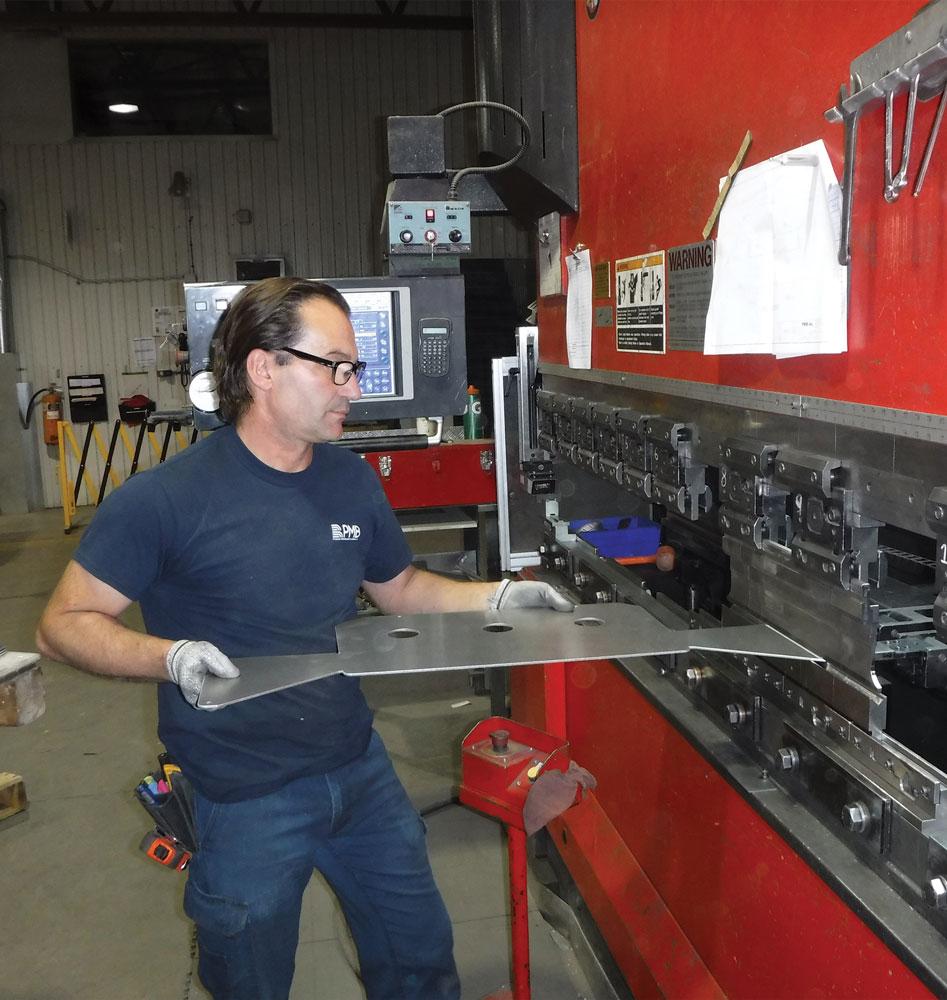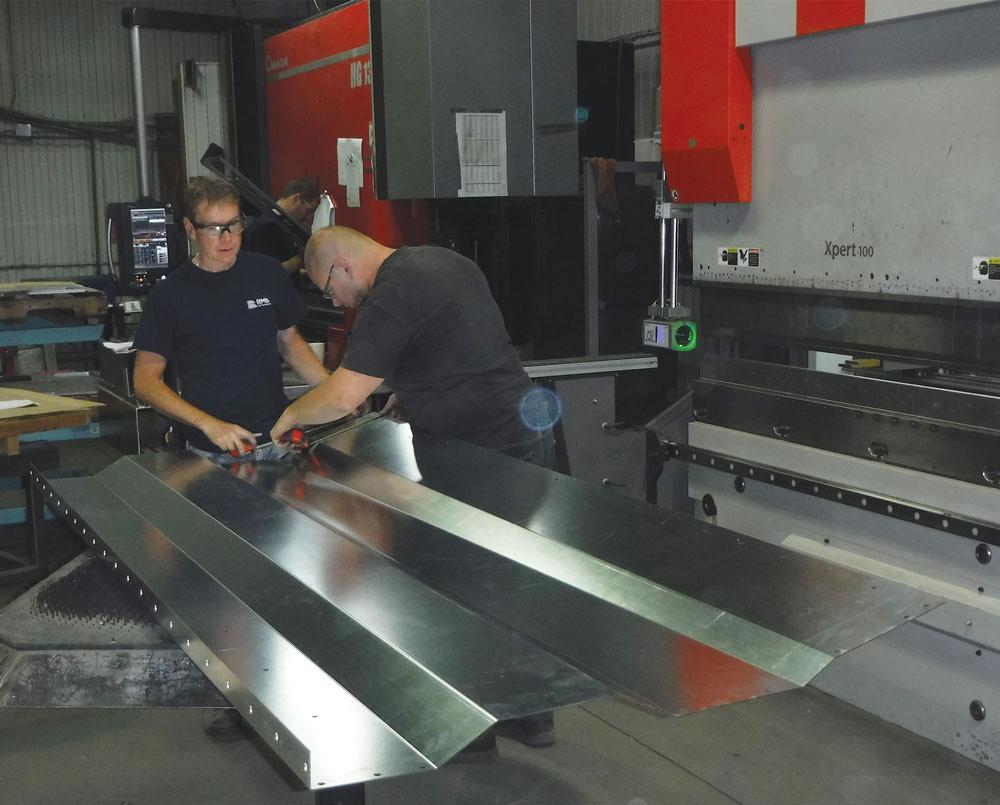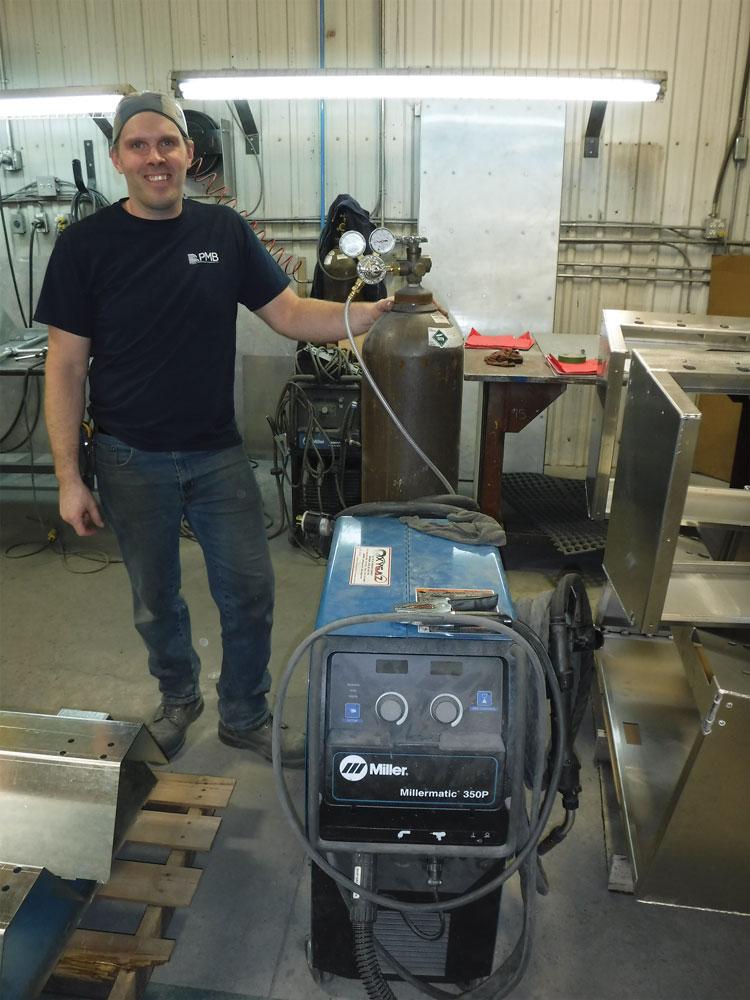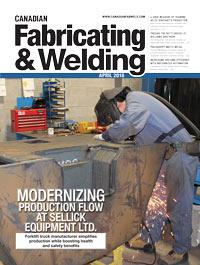Freelance Writer
- FMA
- The Fabricator
- FABTECH
- Canadian Metalworking
Philosophy meets metal
Produits Métalliques Bussières adopts an inclusive leadership model to empower its employees and drive business success
- By Mark Cardwell
- April 27, 2018
- Article
- Fabricating
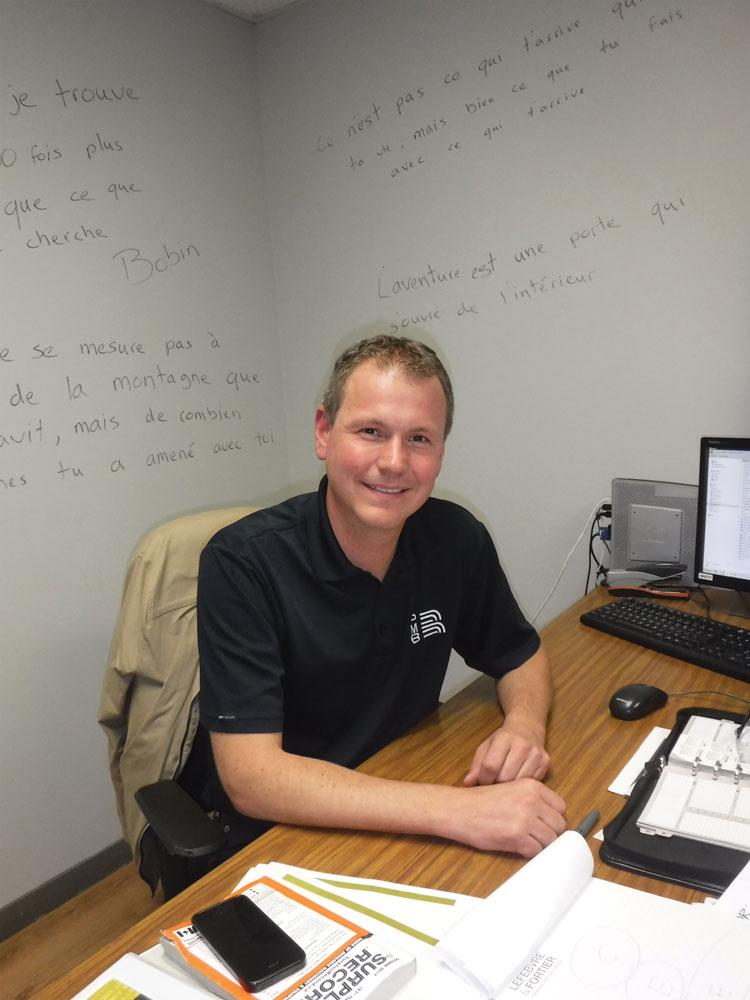
Steve Bussières is the second-generation owner of Produits Métalliques Bussières. It was his interest in inclusive leadership that brought about a change in how the company operates.
Quebec sheet metal shop owner Steve Bussières has always been open to new ideas about organization and leadership. But he was so smitten by a notion that he first heard about in September 2016 called inclusive leadership that he has since converted his family business into a living laboratory of modern management.
“My main goal is happiness, not just for me, but for everyone,” Bussières said about his introduction of the leadership model and workplace principles and practices into his company. “So far so good.”
Established Industry Strength
Bussières is the second-generation owner of Produits Métalliques Bussières. Located in a 25,000-square-foot building on the outskirts of Saint-Henri, a farming community 20 kilometres south of Lévis, the job shop does mostly subcontracting work for commercial builders, as well as architectural aluminum panels for a variety of clients, including manufacturers of ambulances and fire trucks and other automotive companies.
The company’s services include machining aluminum profiles on its 5-axis machining centre, folding sheet metal on 8-axis equipment that can fold sections up to 4 m long, as well as welding, laser cutting, and punch press work.
One of several dozen sheet metal shops in the greater Quebec City area, Produits Métalliques Bussières has landed several high-profile projects across La Belle Province in recent years thanks to its state-of-the-art production chain, which is digitized and optimized from the design floor to the workstation.
The company notably supplied 28,000 panels in 18 colours for the exterior of buildings on the campus of the McGill University Health Centre, a new $2.5 billion superhospital near downtown Montreal.
In addition to that $10 million contract, the company also supplied the copper panels for the high-profile sky bridge that since last year links two buildings at the heart of another new superhospital project - the $1.9 billion Centre Hospitalier de l’Université de Montréal (CHUM), one of the most ambitious urban integration projects in the 375-year history of the Quebec metropolis.
Equal Value, Equal Responsibility
Founded by Bussières’ father Clément, an industrial contractor who founded the shop in the 1990s to make aluminum metal siding for a massive aluminum foundry, the business was always run according to traditional top-down standards and practices, with ownership and management planning and working to organize and control the activities of employees towards the successful completion of company contracts.
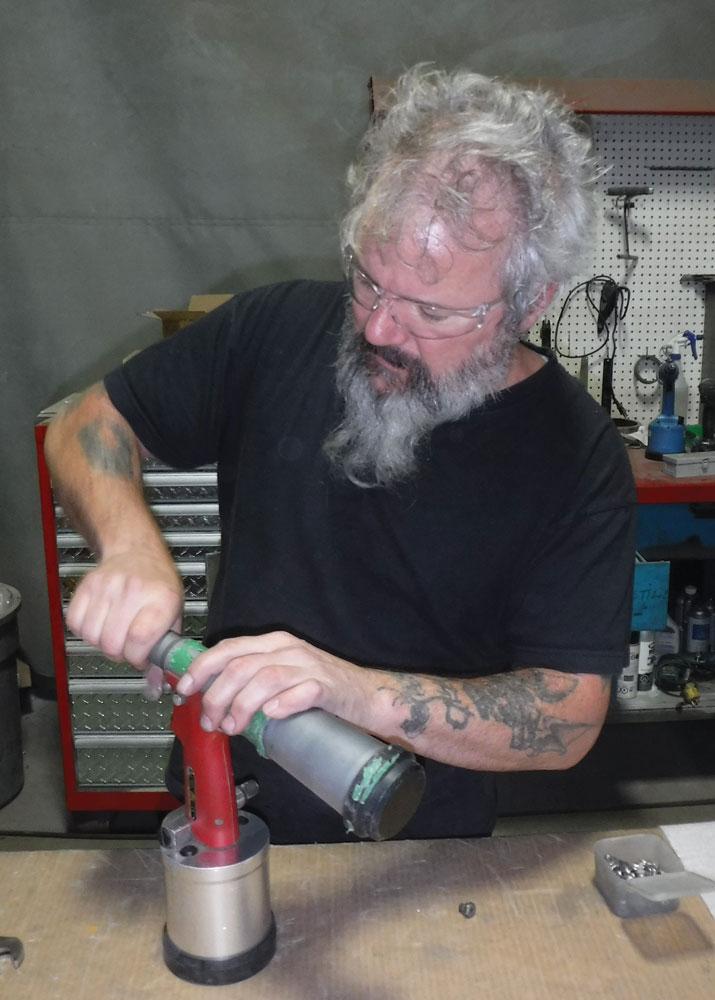
Machinist Mario Lemelin said the company’s new inclusive leadership approach to operations “helps bring out the best in people.”
But all that changed in early January 2017, when Bussières introduced a new leadership model for the business.
Dubbed inclusive leadership, it is a relatively new business management model that gives the role and contribution of every employee equal importance.
Businesses and organizations that use the approach, which was pioneered by Harley-Davidson in the 1990s, have so-called “inclusive workplaces” that are able to tap into – and gain strength from - the varied cultural, educational and professional backgrounds; perspectives; and talents of their employees.
“Inclusion means giving equal value to the contribution of every employee,” said Bussières. “But it also means giving them responsibility for their contribution.”
A 2016 Deloitte report considers inclusive leadership to be better suited to companies and organizations to help them deal with the complexities of today’s world and four global megatrends – diversity of markets, customers, ideas, and talents – than traditional top-down management.
“These simultaneous shifts are the new context,” reads the report (https://dupress.deloitte.com/dup-us-en/topics/talent/six-signature-traits-of-inclusive-leadership.html). “The core aspects of leadership such as setting direction and influencing others are timeless. But we see a new capability that is vital to the way leadership is executed. We call this inclusive leadership.”
The report identifies six traits of an inclusive mindset: cognizance (or lack of bias), curiosity, cultural intelligence, collaboration, commitment, and courage.
Empowering People
Bussières first heard about the concept from a fellow business owner around a campfire during a September 2016 canoe camping trip organized by the Quebec chapter of Entrepreneurs’ Organization, a global business network of more than 12,000 business owners in 53 countries that provides online education forums and executive getaways designed for personal and professional growth.
“It immediately resonated with me; I was blown away,” recalled Bussières, who first started working in his father’s business at age 12, doing odd jobs like cleaning vehicles and equipment. He joined the company full-time after university in 2001, and oversaw the switch to computerized equipment and the development of new products and markets that helped the company grow from a half-dozen employees to around 60 today.
“[Inclusive leadership] was a perfect fit with my personal philosophy and beliefs.”
A self-described humanist who was part of the first cohort of graduates from the École d’Entrepreneurship de Beauce, a novel Canadian school created in 2010 that brings together young entrepreneurs with top Quebec business leaders in structured workshops, Bussières said he most likes the people-empowering approach to inclusion leadership and an inclusive workplace.
“It’s all about transparency and connectedness and being more human and talking and allowing people the opportunity to flourish in the workplace, which is where most people spend a big part of their lives.”
Echoing ideas and numbers that are advanced by proponents of inclusion leadership and bestselling management books like Reinventing Organizations: A Guide to Creating Organizations Inspired by the Next Stage of Human Consciousness by Belgian business theorist Frederic Laloux, Bussières said 96 per cent of people are trustworthy.
“You can’t close yourself off from new ideas because of the other 4 per cent,” he said. “If you are mistrustful, you are not being creative, not moving forward, not creating happiness. For me, success is happiness.”
Plans Into Action
Working with Philippe Zinser, a local human resources consultant who is familiar with the inclusion leadership and workshop movement (a concept known in French as Entreprise Libre, or free business), Bussières laid out both his intention and vision to immediately revamp the organizational structure of the company at a meeting with employees in a rented conference room near the plant in early January.
According to Bussières, the initial silence and bewilderment that followed the presentation was soon replaced by positive interest and discussion.
“It was good news for them because they always said they wanted and needed to make decisions of their own to cut out red tape,” he said. “But some were worried or unsure about the other half of the equation, because liberty and responsibility go hand in hand.”
As a first step to the new system, Bussières took out the plant’s punch clock. Now employees fill out and submit their own pay sheets without the need to have them authorized.
Employees also can work the hours they want on the days they want, provided they complete projects and do their jobs properly. However, because the plant has two shifts from Monday through Friday, those changes have to be within the same shift.
Employees also can come in to work on weekends, provided there is at least one other employee present.
Employees are also now responsible for ordering and retrieving the materials they need to complete projects.
They also find and hire employees and generate purchasing demands for equipment and machines if they judge them necessary, provided their colleagues in their production cell agree with their assessment (Bussières still has final say on spending decisions, but the process allows this to be a bottom-up approach to equipment acquisition).
Actions Into Strength
“I thought the whole idea was crazy when I first heard it,” said Martin Hazen, a welder who has been at the plant since 2009. “But now I like it.”
In addition to the good feeling he gets from being relied on and trusted to do his work without having someone tell him what to do or look over his shoulder, Hazen said he likes being able to take action on things that affect his performance.
Notably, he convinced his four fellow welders of the need to buy a second pulsed gas metal arc welding machine for the shop.
“We calculated how and why we needed it, how long it would take to pay for itself, and shopped for a unit,” said Hazen. “When we went to see Steve, he said it was crazy that we hadn’t bought one earlier and gave his approval.”
Théophile Gambet, a newly minted industrial engineer from France who started working in project management at the plant in March, said he likes the fraternal feeling that comes with the sharing of pressures and responsibilities with other employees, no matter how senior.
“It feels like we’re working with them rather than just taking and following orders,” said Gambet. “But the system requires mature and responsible people who can stand up for themselves. If not, it can’t work.”
He added that Bussières is like a coach who sits and listens patiently to issues that are brought forward by employees. However, he will only offer them possible solutions to their problems, not answers.
“He constantly directs us back to find solutions within the team,” said Gambet. “He never tells us what to do. He recommends and suggests and advises, but doesn’t order.”
For his part, Mario Lemelin, a machinist who helps out and fills in wherever needed around the plant, said the new system “helps bring out the best in people.”
The downside, he added, is that it requires constant and harmonious communications between everyone in the shop.
“This is a small place; you have to stay cool,” said Lemelin. “There have been a few heated exchanges. But I think everyone loves the new liberty. I know I do. I’d have trouble going back to a traditional workplace.”
Ongoing Change
For Bussières, the day-to-day impacts of the changes he made to his company’s organization, which he calls “organic and ongoing,” have been both limited and largely positive.
Despite the voluntary departures since January of the company’s four managers (in human resources, production, sales, and quality – positions that have all been abolished), Bussières said the quality of workmanship has remained high.
On the few occasions when projects have not been delivered on time, the employees who were responsible for the delay have gone to see the customer to explain.

“It feels like we’re working with [management] rather than just taking and following orders,” said industrial engineer Théophile Gambet. “But the [new management] system requires mature and responsible people who can stand up for themselves.”
“It has a very real and positive impact on them and the client,” said Bussières. “Everyone is accountable for their own actions.”
Business-wise, he said the company has also done away with traditional aspects like goal setting, planning, action plans, and even bonuses attached to sales.
“They go against the concept of the team,” said Bussières. “There is no planning, no objective. The focus is the client and the client’s happiness. So far so good.”
Mark Cardwell is a Quebec City-based freelance writer.
Produits Métalliques Bussières, http://groupebussieres.com/pmb-produits-metalliquesAbout the Author
subscribe now


Keep up to date with the latest news, events, and technology for all things metal from our pair of monthly magazines written specifically for Canadian manufacturers!
Start Your Free Subscription- Trending Articles
CWB Group launches full-cycle assessment and training program

Achieving success with mechanized plasma cutting

3D laser tube cutting system available in 3, 4, or 5 kW

Brushless copper tubing cutter adjusts to ODs up to 2-1/8 in.

Welding system features four advanced MIG/MAG WeldModes
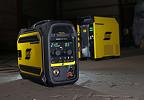
- Industry Events
MME Winnipeg
- April 30, 2024
- Winnipeg, ON Canada
CTMA Economic Uncertainty: Helping You Navigate Windsor Seminar
- April 30, 2024
- Windsor, ON Canada
CTMA Economic Uncertainty: Helping You Navigate Kitchener Seminar
- May 2, 2024
- Kitchener, ON Canada
Automate 2024
- May 6 - 9, 2024
- Chicago, IL
ANCA Open House
- May 7 - 8, 2024
- Wixom, MI













